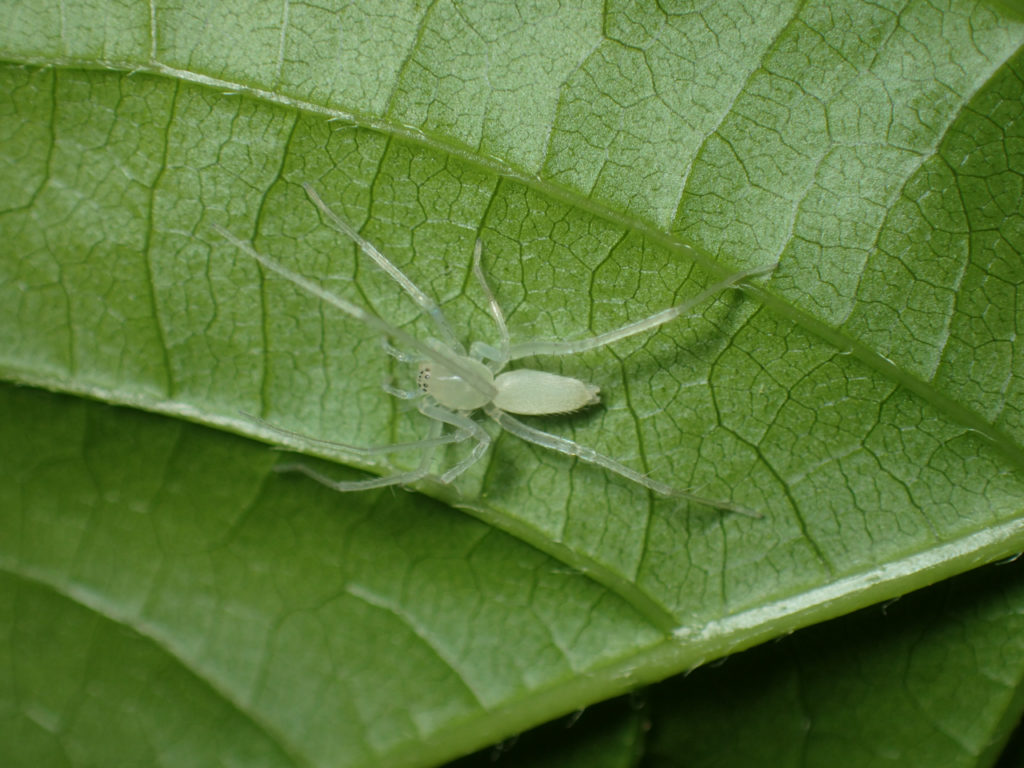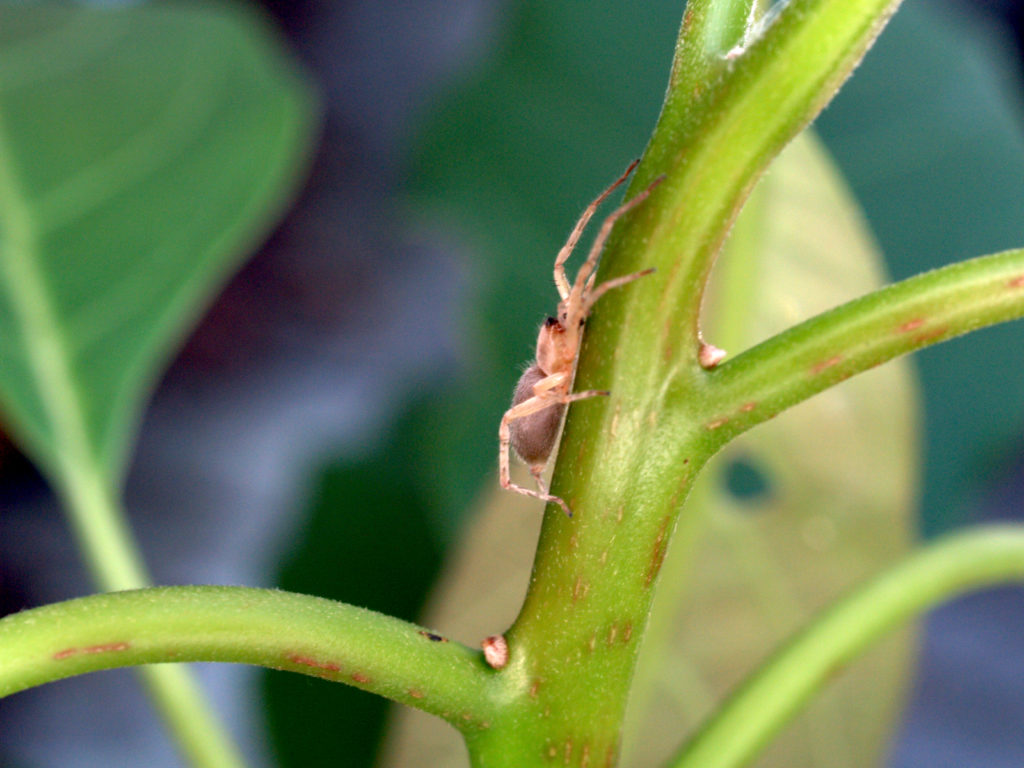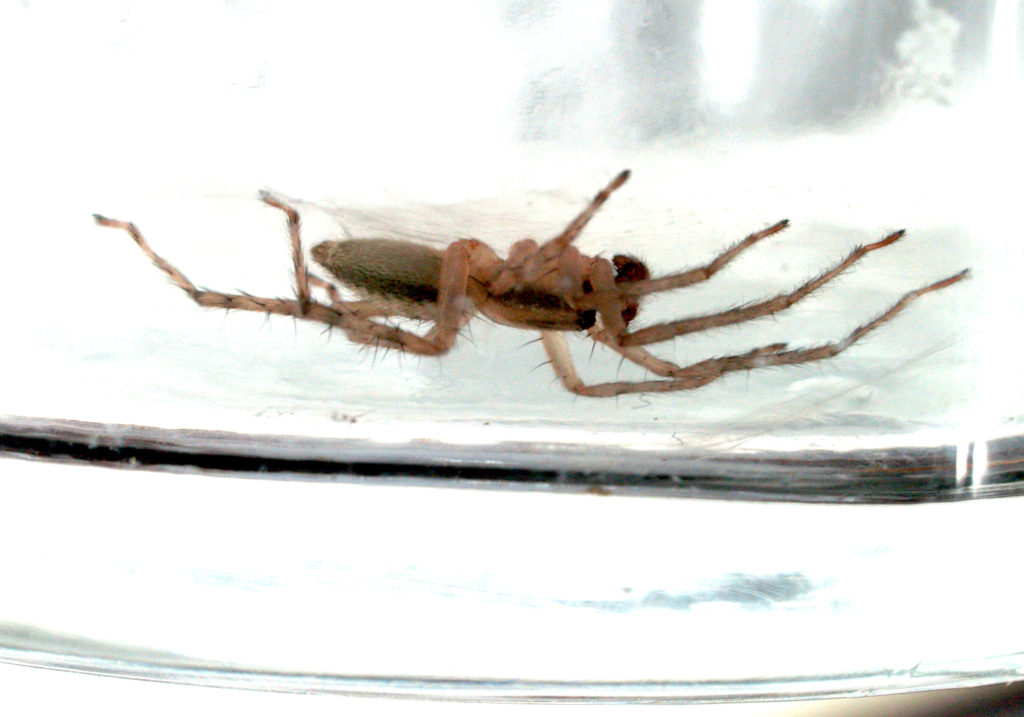You probably do have little “ghosts” (as in ghost spiders, of course) in your garden. They are spiders of the family Anyphaenidae and are so named because they not only are active at night, but some of them—such as this one—have a decidedly pale and mostly translucent, ghost-like* 👇 appearance:

Photo by John P. Friel, some rights reserved under Creative Commons License (CC BY).

Photo by D. ZEPP
Ghost spiders do not make capture webs, and use their silk only for drag lines, egg sacs, and to make resting/hiding places—often in curled leaves.
To catch prey, they rely on speed: They are fast*** 👇 runners that are known to dash about constantly when hunting. In fact, they often seem to be on little sugar “highs,” training hard to develop their lightning-fast moves by overdosing on the sugars to be found in plant nectars (Taylor and Foster, 1996).
I kept two juveniles alive after their capture last summer, waiting for them to mature so that I could photograph and identify them. On two occasions I opened a jar ever so cautiously to check on its resident after having carefully ascertained that it was not near the opening: Twice there was no spider to be found in the open jar, despite my having seen it moments before in the unopened jar!
In one case it had simply vanished-—as befits a specter—never to be seen again. In the second case, although I did not see it making its escape, I spotted it seconds later hightailing it off the back of my desk, leaving a tiny cloud of dust lingering in the air as I heard the faintest of “meep, meep!” sounds.
And so, I shall try again! At this writing, I have another species of ghost spider in the same type of jar. I collected it as a subadult male a week ago, and yesterday it had molted, meaning it’s now a mature, hence identifiable, male. I already knew it to be a ghost spider, and probably Hibana gracilis (Hentz, 1847) at that**** 👇 but, barring yet another escape, I’ll now be able to confirm it.

Photo by D. ZEPP
Sorry for the blurring, but the photo was shot through a jar that is anything-but-optical quality. (The photo is not upside-down, the spider was; note the silken pad from which it’s hanging.) I’m pretty sure this is H. gracilis, which would be ever so timely for this posting, as the American Arachnological Society officially recognizes the common name of that species as the “garden ghost spider.”
Now the trick is not letting this one get away before a photo shoot!
*👆
I guess, basing ghosts’ assumed appearances on movies and cartoons.
**👆 Depending on the species, anyphaenid adults are generally 4-8mm long.
***👆 When I write “fast,” I really mean FAST!
****👆 Even immature anyphaenid spiders are distinguishable from look-alike families by the location of their spiracular furrows: furthermore, the location of those in the genus Hibana is unique among anyphaenid genera. Therefore, this specimen, even as a juvenile, could be determined to be Hibana on that character alone—and superficially, it looks just like H. gracilis, which is very common hereabouts.
Reference:
R.W. and W.A. Foster. 1996. Spider Nectarivory. American Entomologist 42: 82-86.
Any Donald ZEPP’s photos may be used with attribution for non-commercial purposes under a Creative Commons Attribution 4.0 International License.
